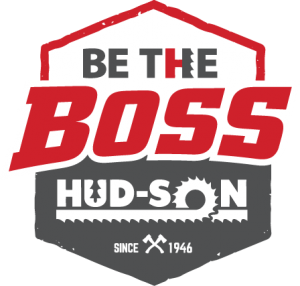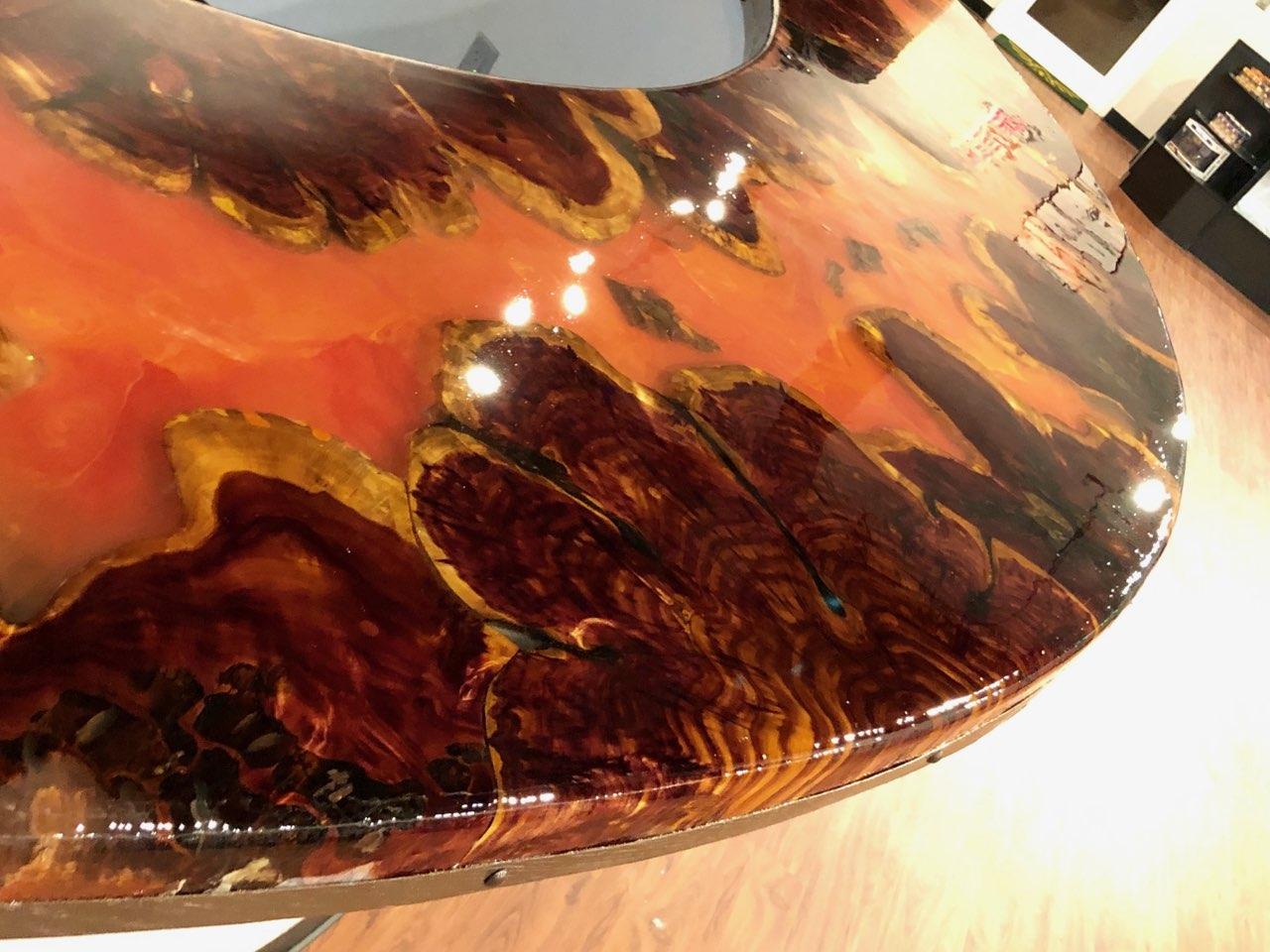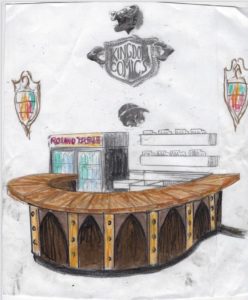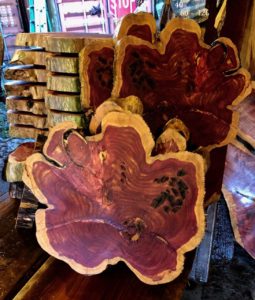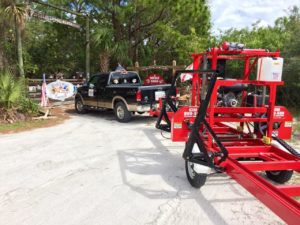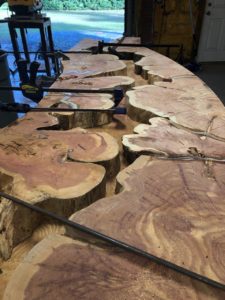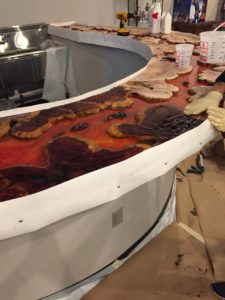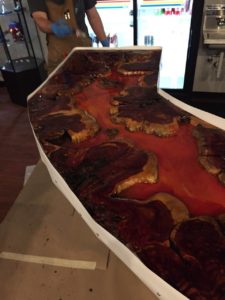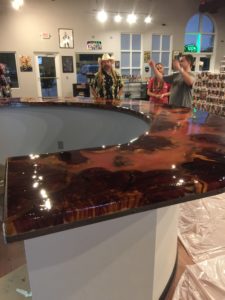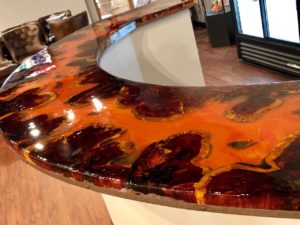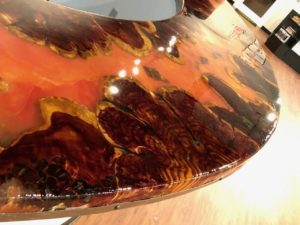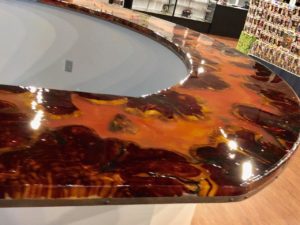14 Nov OBG(Off Grid Build) How I operate a sawmill: Turning Tree’s into lumber Hud-Son Forest Equipment Farmboss 36″
OGB(Off Grid Build)
How I operate a sawmill: Turning Tree’s into lumber(in depth)
Hud-Son Forest Equipment Farmboss 36″ Trailer Portable Sawmill
Alright, so right now I am milling lumber out of all the trees I cut down last year to clear the driveway and the build site of the property here. I’m milling all red oak right now into four square boards which is one inch thick boards. I’m milling enough of that until I get enough of that to use for flooring for the house. I’m not exactly sure how much flooring we need it’s going to be somewhere around a thousand to twelve hundred square feet not the whole house is going to be hardwood floors. Than I’m going to move on to thicker pieces for different pieces like six quarter, eight quarter, and ten quarter pieces for different pieces of furniture/trim/doors and things like that.
So this is my sawmill. It’s a Hud-Son Forest Equipment Farmboss 36″ Sawmill with heavy duty trailer. Theoretically, it can breakdown a log that is 36″ inch diameter cut the skins off all four sides and than you come down to a cant(a cant is a log that is squared on two or more sides that will be sawn further). The actual opening, the actual mouth that a blade can cut is 22 inches. So the idea is that you cut the skins off of 36 inch log and that you come down to a 22 inch cant. 22 inch width and height than you can cut boards out of that.
The biggest stuff that I’m cutting here is about 16 inches maybe 18 inch diameter. So not too big. So I’m going to take you thru the whole process. From selecting a log, cutting a log, to an appropriate length in anticipation of stacking it properly. Neatly and orderly. To deciding how you are going to make the cuts, depending on what you are planning to use the boards for. The size of the log will dictate that. How to stack it and dry it. The whole thing.
So I’m going to get started by selecting a log. So this is the bunt end of the log. It’s not too bad, there’s a little bit of checking I cut. Maybe six inches off the end. A lot better than the other end. That one is still pretty badly checked about six inches in. So I’m going to cut a little bit more off that end and I’m going to keep this like it is. I’m concerned about this right here because this is like another trunk of this tree that was growing separately next to the other one. At least it looks that way and than the whole tree kind of overcame it and it got encompassed. So that’s a little weird. I’d like to try to get rid of that too. Actually you can see right here there’s a bulge here so probably that trunk went out this way at some point and than it broke off/the tree just grew around it. That’s not going to be good for lumber. We’re going to be stuck with that but there’s still a lot of good lumber in this tree aside from that.
I cut six inches off the end but it’s still pretty badly checked(checked means the wood is dry and has cracked). I’m at 12 foot 6 now so I’m going to try cutting another six inches and see how much I can get out of that.
Still checked but it’s much better! Okay so this is my end sealer here. It’s actually called Anchorseal a company UC coating in Buffalo, New York. www.uccoating.com. They are pretty much the only ones who make good end sealer that I know of.
Just paint it on liberally on the end grain. You do not want to be skimpy on it. You want a thick, waxy coat. Now I was saying before that I should have done this when I cut the logs last year. Maybe I could have saved some of this checking from occurring. You know it’s not too late to do it now even though I’m going to mill the lumber. During the drying process, during the air drying process because this lumber is going to sit outside for at least a year here on the property and during that time even though now we have all these wood flat faces exposed that you can dry off those faces. It still lots of times check from the end grains. This is going to stop additional checking from happening during the drying process of the lumber. So we are going to get both sides here.
So I’m about to roll the log onto the machine here. A couple things 1. The dogs need to be up. These guys right here will stop that log where it needs to be.
As you can see this sawmill is on wheels, it can be towed. The bed is up high, about two feet here so you cant roll along onto it from the ground. You need to pick it up and drop it down. So this might not be the right mill for you if your just trying to roll logs onto your mill. For me I need to move it around and I’m really lucky to have a skid steer that I can use all the time. I’m just going to take the skid steer here up load that log off the forms and roll it right onto the bed of the mill. The dogs are up right now and that’s going to stop the log from rolling off the backside of the mill.
This is a really big log so I don’t want to risk slamming it on to the mill, so I’m going to roll it off by hand. It’s too heavy to move by hand so I’m going to use the cant hook to roll it.
Okay so orientation of the log on the mill. You can see here there’s a check going across this way and there’s another little check that meets this one halfway thru. This whole area is check free. In a lot of cases there will only be one check going across the diameter of the log. In that case when you start making your cuts you basically want to keep this line parrall with two sides and perpindular to the others. Once you get a square cant out of this. You want this going straight this way or straight that way. That’s going to allow you to isolate that check to one or two boards in the center of the log. Where all the other boards are check free. Which is really going to be hinderance to that. So if I make my cant exactly like this in this orientation which is how I’m going to do it, keeping this one as vertical as possible. I’m going to turn this thing so that this check is horizontal. So when I cut my boards off I’ll just capture that whole check is going to be running vertically and I’m going to get that check in every single board but basically for this half of the log. There’s really nothing I can do about this.
The other thing to consider is checks on the other side of the log. It’s nice when the check on the other side matches the same orientation on this side of the log because then that works on this side of the log because then that works great. You can capture the check on that side and the check on that side and the check on this side both of those checks in the center. If you have on the other side going this way than you pretty much don’t have another option you going to get checks. You can avoid all the checks going this way by turning it horizontal but on the other side your basically just trying to figure out what the best way to reach the checks on this side and that side. Somewhere your going to capture the check in as few boards as possible. It’s not rocket science.
So that’s one thing. This is a pretty good orientation here, right now. That check is running vertically , I like that. The other thing you need to consider is when orientating your log is what types of boards you want to get out of it. That’s going to require me to explain a little bit about the different cuts you can get out of a log. So(I don’t know if it’s going to show up at all). What I’m doing here is drawing a simulation of the grain. So those rings basically dictate the grain and what each board is going to look like and the structural properties of that. So basically there is a few different ways that you can solve this. If you do what is called plain sawing(the log is cut straight through with each cut parallel to the last). This produces a mix of plain, quarter, and rift sawn woods(about a third of each). Your basically just cutting a board here, cutting a board here and as you go down you cut boards like this. So what you end up with is different angles of grain in each board. This board up here basically the grain is pretty much flat, see that? You got the grain a little bit of curve but it’s pretty much flat running across that board. In this one, it’s like not quite at a 45 degree angle, it’s a little bit less than that so the one that is running flat we call flat sawn(boards have the grain running parallel with the wide face of the board. This creates a unique look as the saw effectively slices the annual growth rings right down the middle, giving what is know as a cathedral window look. When the grain is running vertically, vertical grain like you see here running a 45 degree angle or more, that’s more vertical grain and your not going to see those cathedral shapes. You’re going to see straight grain lines.
So the straighter the grain lines like here for example when the grain is running straight up like this, that’s called quarter sawn(lumber is defined as wood where the annular growth rings intersect the face of the board at a 60 to 90 degree angle. Quarter sawn wood has an amazing straight grain pattern that lends itself to design. Structurely that’s stronger than flat sawn or what this is call rift sawn(the annual rings are typically between 30 to 60 degrees being optimum. The log’s growth rings product a linear grain pattern with no flecking. Structural it’s the strongest and aesthetically it looks a lot different because you see straight lines.
I happen to like quarter sawn and rift sawn a lot better than flat sawn but it’s totally your preference. A lot of furniture it doesn’t really matter structurally you’re not supporting so much weight where it really matters if it’s quarter, rift, or flat sawn. It’s mostly than aestheic thing. There are some times for table legs for example. A lot of people like rift sawn for the aesthetic but also for the strength it gives. When your talking about structural members like load bearing beams, quarter sawn would be the best because it’s the strongest. Put that vertical grain up there and it can withstand a lot more vertical force than if you had a beam which were all flat saw. You know most beams the most 6 by 6’s or 8 by 8’s, 12 by 12’s basically they are the entire log. So when you have that much mass you don’t necessarily have to worry about having quarter sawn material. You’ve got quarter sawn but you’re also got rift and flat. You’ve got the whole thing. It’s strong enough with all that mass.
What I’m going to be doing, I’m going to be cutting out a cant. Which looks like this. So basically I’m going to be cutting out a square. I’m going to cut all these skins off. So what I get is what they call a square cant. From that I’m going to cut my boards.
So actually let’s move to the other end and I can redraw how I’m going to saw this log.
They way I’ve been sawing these logs most of my logs have been smaller than this. This is one of the bigger ones. What I have been doing is cutting off the skin like this give or take so this disappears to a flatten lined. So I’m going to turn the log 90 degrees and than this guy will be facing up to cut this skin off and so on. So what I end up with is the cant. From that, like I said most of my logs at least 12 inches. I’m dealing with a lot of cants that are between 7 to 10 inches. So in those cases I can really break it down and get different cuts out of it. This is basically plain sawn which looks like this. So I’m going to cut boards a matter of cutting four quarters to inch thick boards. I’ll cut one board here than the next board down here.
So what I end up getting is a variety of different cut boards. The first couple boards are flat sawn with the grain going more flat. The next couple are going to be rift with the grain going between 30-45 degrees like this. Than when I get around the center of the log it’s all quarter sawn. So it’s a mix of different cuts I get out of the log. When the log is much smaller. Smaller so I honestly get a few flat/rift sawn boards. The rest are all flat/rift sawn again.
So that’s how I’m going to do it. I might keep these boards the full width 12 inches than bream them down later in the shop when they are dry. If I do get 12 inches or more out of it I may turn them down 90 degrees and than cut them down to six inches of width. If there wide enough and worth cutting down I will. So I’m going to start up the mill and make my first cut.
To start off with, I need to lower these dogs a bit. I’ve got a handle to do it on the other side, just showing you here. You want to lower them to about here so I don’t have any chance of hitting these mental blades against the dog. It will ruin the blade. So I just want to keep them a little how. I’m going to lock it in at that height. Now I can roll this log against them so they stand still and there low enough so that there is no danger.
Alright, I’m going to use the cant hook here to roll this thing against the dogs. Now I’m going to use this little guy is like another dog, a different type of dog mechanical. It’s got a little spike. I’m hammering it into the wood. Now it’s not going to roll on me.
Give it a few more whacks. This is going to lever the log over and make solid contact with those dogs. Now this log is secure and ready for milling.
Alright, so this thing has a winch so I’m going to bring the blade down to right about I want to cut with it.
So what I’m doing here is sighting this blade against the length of this log. Now it gets wider at the other end and what I’m trying to maximize how much material I get out of this log. If this log had a pretty consistant diameter across the entire length, I’d bring it down to about here to make my first cut for the cant so I can get it square. I don’t want to go too far because this is all good material here. You can see how I can imagine a square of the fact it get’s wider at the end. I’m going to have to average it all out and see how that all works out.
I’m going to start this cut really skinny on this side and wider on the other.
So this is just a small 23HP motor. It’s a 23HP Briggs and Stratton. It starts like any other small engine motor would. It’s starts like any other small engine motor would. It’s got a choke but it’s warm so I don’t even need it. I’m going to start it up. Making sure that this guy is wide enough to cut inside our log. Next little thing here there is a little valve here to feed water to the blade to keep the blade cool. It is not it’s going to get too hot on a day like this when it’s rainy/cold but it also helps clean the teeth off as you cut.
Turn this valve all the way till you see the water come out on the blade than were going to pull it back until you see a nice, steady stream. It’s kind of like a trickle stream. Donesn’t need to be too much especially on a day like today.
Going to give it some gas too make the first cut. Okay, so where I want my square to be on this side my cut is a little narrow. I really want it to be out to here. It’s like I said because the side is a little wider I need to average. Make this side a little narrorer and make the other side a little wider. So we will take a look at the other side.
Okay so on this side we’re really wide because we cut deeper into the wider section of the log. So like I said a little narrow on that side and wider on this side gives us a good average. On this wide we’re probably only going to come out to like here for our cant.
Next up is to spin the log. Pull out this dog here. Put those dogs out all the way. Gives me the ability now to spin this thing against those dogs. Alright so using the cant hook I’m going to grab it and I’m going to grab it and I’m going to grab it and I’m going to turn it 90 degrees so that flat face is against those dogs. Now I’m going to put this little dog in. I’m going to grab it and I’m going to turn it 90 degrees so that flat face is against those dogs. Now I’m going to get the dogs down about half height before I do anything else because you want that in place before you put pressure against them. Okay so those are half height. It’s easier to do with two people for big logs like this. I’m going to put pressure against those dogs.
Alright now were ready to pull our power heat back and get ready to make our second cut. Okay for now once we make our 90 degree cut here now with a nice straight sharp edge. Now we don’t need these dog’s anymore on the back. We also don’t need the dogs that clamp in on the other side because we have these little tiny dogs. Now we have this right angle the weight of this just sits down and cant get pushed this way because of these little nubs that are along the length. They don’t have to have contact everywhere. See I have a little curvature of the log over there but there making contact in enough places to hold the log where it’s at. So now were just using these. I can make the last two skin cuts.
Alright there it is. All four skin cuts are off and we have an almost square cant. This was a bit challenging with me just by myself because it was such a big log. To hold it up against the dogs, get the other dogs in to hold it still. It’s pretty good. It will work really good none the less and we have 113/4 by 12 inch. So we’ll just wait till the morning and cut the boards out of it.
Alright so it’s the next morning now and were ready to make boards out of this cant. So first thing were going to do here is position the blade. I’ll show you how to do that so put this up to the cant. First thing I’m going to do is low the blade with the winch until it hits the tip of the cant so it’s just grazing. See how its bending the blade a little bit? That’s too far. You want it so its just grazing. Just graze that sawdust off the top of the cant without being the blade at all.
Okay now so this is out measuring gauge. It’s basically just a ruler and I’m using from zero to 36 inches. I’m just using that to gauge how high, how thick of a cut I’m making. You can also use this gauge over here. This 4 stands for 4 quarter. So a quarter is a quarter of an inch. So when your talking about an inch thick board. If your talking about inch and a quarter. Six quarter inch and a half 10 quarter two and a half. So this little gauge here the most common cuts for hardwood lumber are 4 quarter, 5 quarter, 6 quarter, and 8 quarter. So that’s why this little gauge has this here so you can just use it instead of trying to remember what number inch your at. You can go to one from one 4 to the next 4. I’m not too fond of doing that because what ends up happening is you end up needing to get off that gauge because the blade itself is 1/16th of an inch. Takes off a 1/16th of an inch kerf. So each time you make a cut if you just do 4 to 4 to 4 you end up losing a 32 second to a 16th of an inch you end up having to go a little lower next time. So I just like to go by the inches.
Now that we’ve lined up to the top of the cant you’ve got to look straight overhead. The way I do it, this is probably not even the original marking gauge. It probably was something else originally. I just reference off the bottom off this piece of plastic glass so I can get up, look at it nice/square and I can see right now we are at 12 3/4’s right there. So what I’m going to do for our first cut. I’ll lower this thing down to 11 3 quarters.
Okay so know I’m at 11 3 quarters and as you can see the blade is going to it and cut pretty much an inch board off the top of this cant. Another thing to note here is now that we have a cant that has a specific width can move this thing guy(this little support gauge thing) over closer to the cant. What this does is it supports the blade so that there’s less deflection so that the blade will have less change to bow one way or the other when your cutting thru the log.
Okay so I’m going to start it up and make the first cut. Okay so instead of pushing the machine away, pulling the board off and than pushing the machine back to make another cut, leave the boards on. The thin blade can just slice thru more and more boards even with the weight on top so we don’t need to take the boards off. You just keep cutting and cutting.
So when I picked the winch up a little bit to clear the board when I pull the machine back I than lower it back down to where I started to 11 3 quarter inches. I’m going to lower again to 10 3 quarter inches.
Okay so now that I’ve got a few boards cut you can see what I’ve been talking about here about capturing the pifth in a board or two. So we actually have about five boards that are check free. These are good quality boards. This check here that goes all the way across just underneath this top board here had been oriented vertically every single one of these boards would have had a crack in it going in X number of inches however far the check went sometimes it’s a couple inches. Sometimes its a couple feet. So now I’ve got there’s a little bit of that verical check that I wasn’t able to avoid. This piece right here has it but it was only one. Now on the next cut will capture pretty much that entire cut. So let me come back here. So I’m going to do down to 5 5/8ths. So now you can see that next board is going to take 90% if the board here.



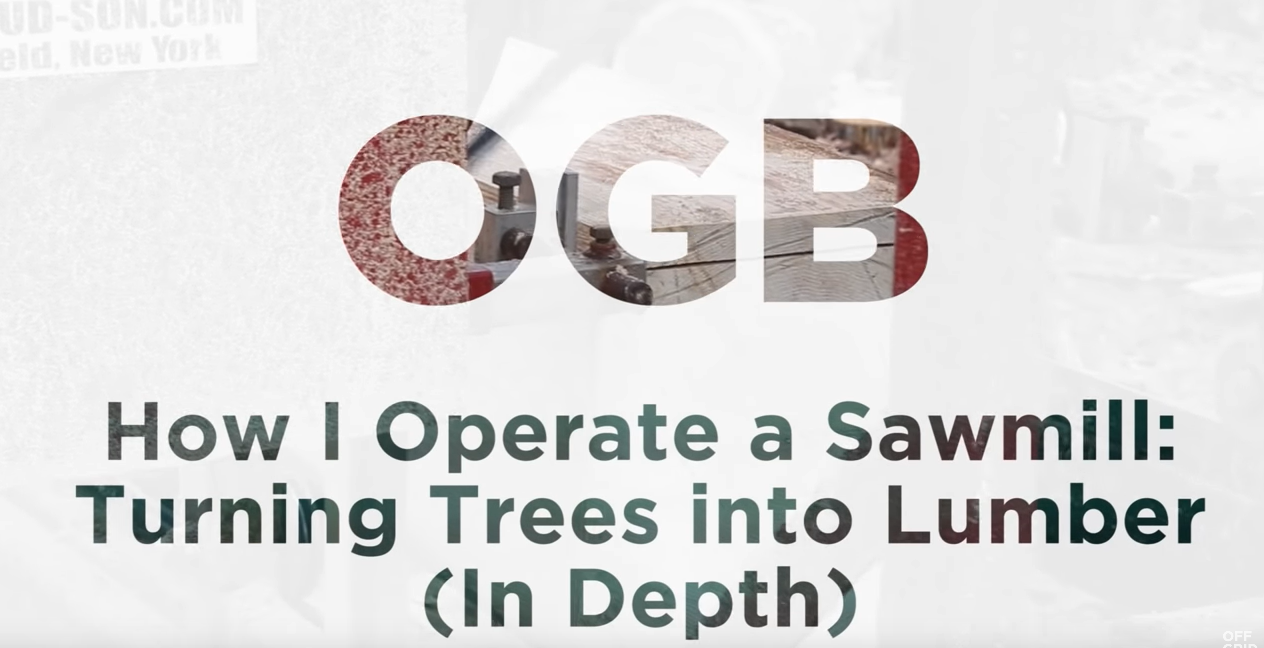

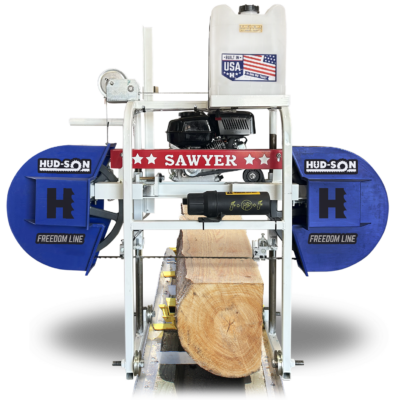
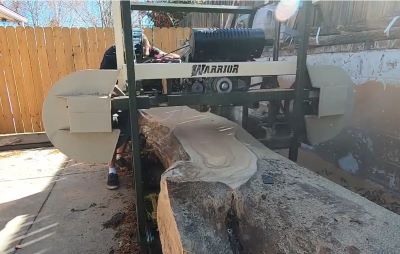
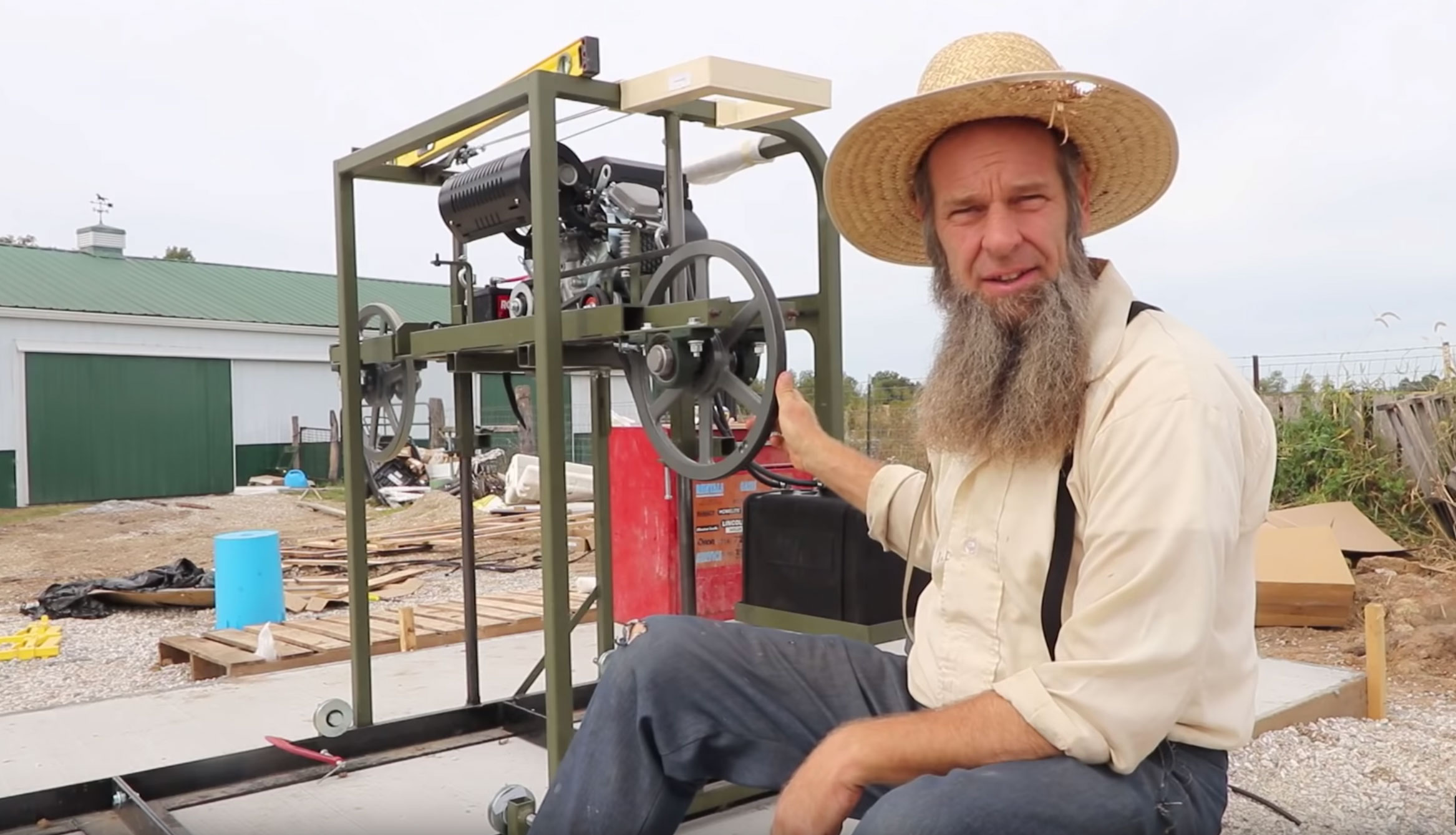
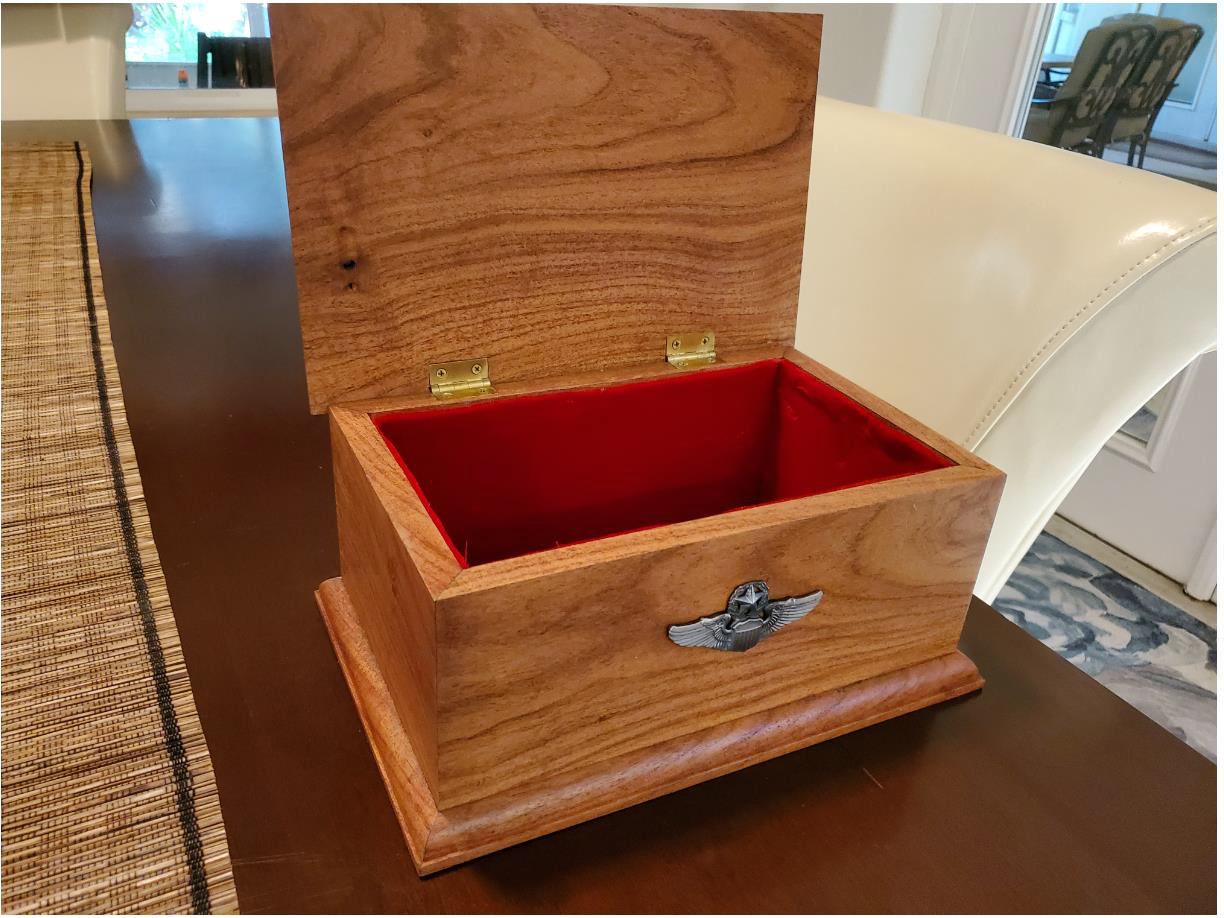
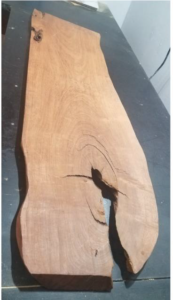 We would be remiss if we did not mention this full circle tear to your eye mesquite log story. This coming from our good friend and customer of Hud-Son sawmills in Cocoa, Florida CW Bailey:
We would be remiss if we did not mention this full circle tear to your eye mesquite log story. This coming from our good friend and customer of Hud-Son sawmills in Cocoa, Florida CW Bailey:
